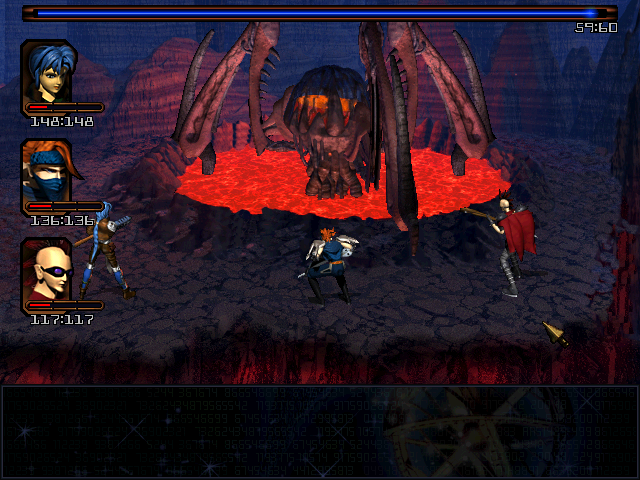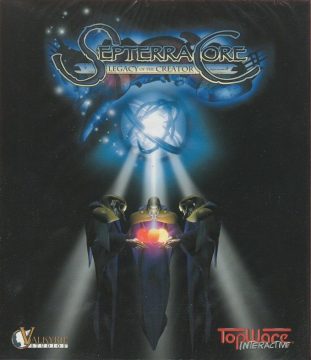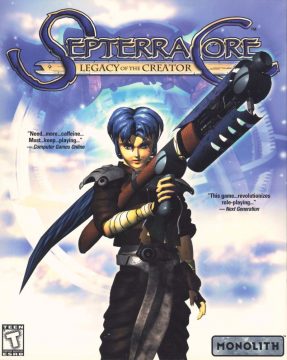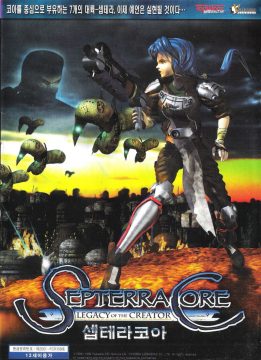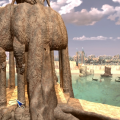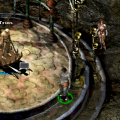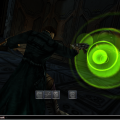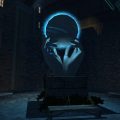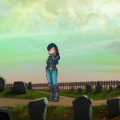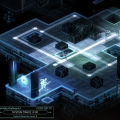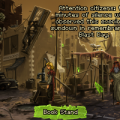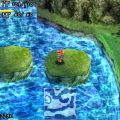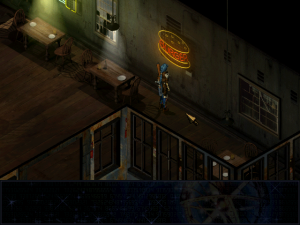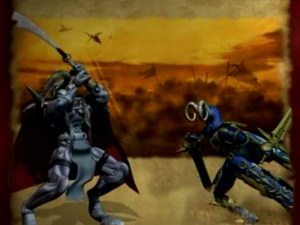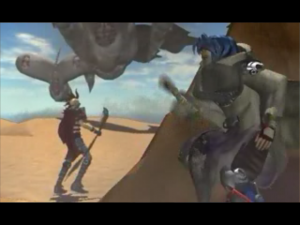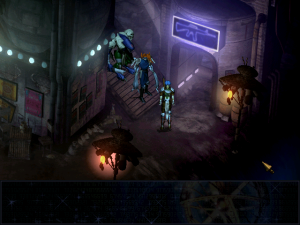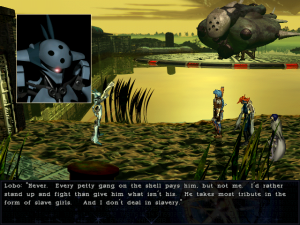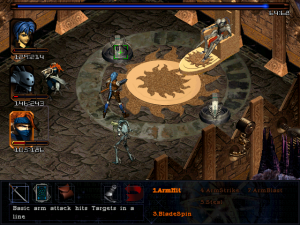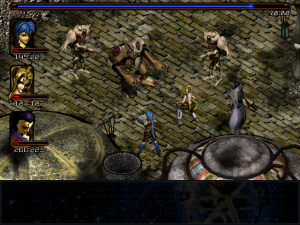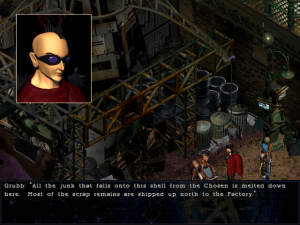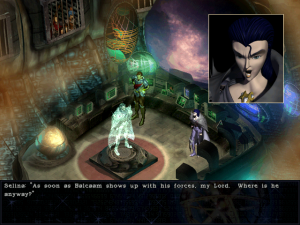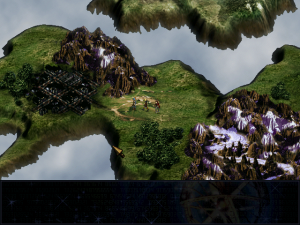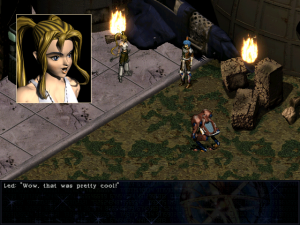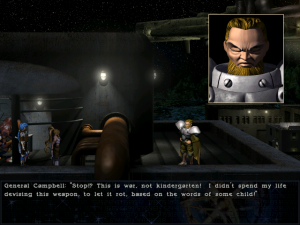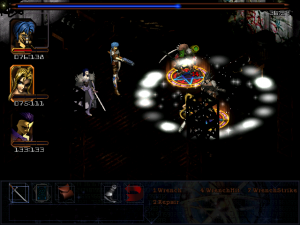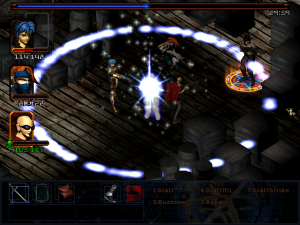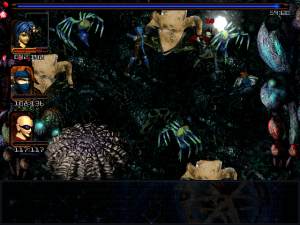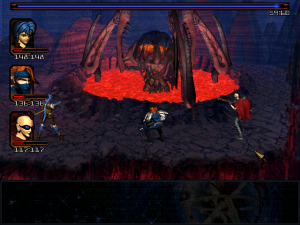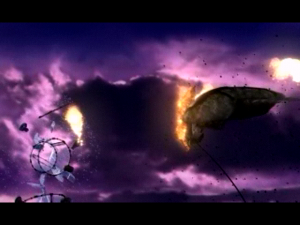We currently live in a resurgence of the classic style JRPG. Square-Enix has finally realized just what made their beloved classics so beloved in the first place and have been making games pushing their original foundations further. That’s not to mention the indie scene being filled with all sorts of titles paying homage to the greats of Dragon Quest, Final Fantasy, and many other legends, with many western developers picking up the reigns with the likes of Cosmic Star Heroine and Undertale. That said, western RPG developers paying homage to their Japanese contemporaries is hardly a new phenomenon. In the late 90s and early 2000s, when the JRPG ruled the PlayStation, it was inevitable that a few studios would try capturing that magic in their own way. Septerra Core, from the short-lived Valkyrie Studios (staffed by former creators of the Beavis and Butt-Head PC adventure game), is one of those games, and it succeeded at a good portion of what it aimed to do. It’s biggest shortcomings mostly stem from the games it was inspired by.
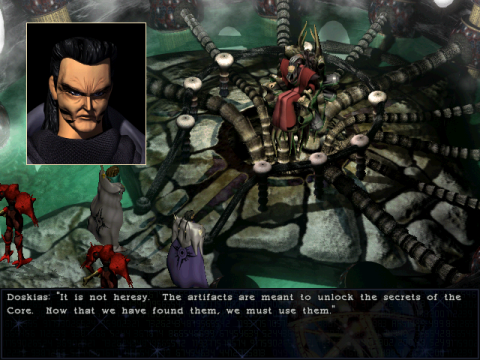
Septerra Core‘s premise is certainly original. Rather than having multiple continents or dimensions, it has a planet divided up into seven layers that revolve around a core that powers the rotation of the world through a large spine. In other words, it’s a planet-sized globe that supports life via magic and organic tech. The top layer is home to the Chosen, descendants of the savior Marduk who effectively rule over the other layers of the world. A direct descendant of Marduk, Doskias, decides he’s the most right and just of his race and breaks off in order to reach the core and unlock “the kingdom of heaven,” waiting to be revealed by some sort of savior. Thus, he spreads war to find the keys he needs and even attacks his own people. A girl on the second layer (which consists of technology made from the junk of the Chosen) named Maya quickly finds herself wrapped up in the proceedings as she discovers Doskias spreading war to the other layers, moving to stop it with a rag-tag band of misfits at her side. That includes…
Characters

Maya
A war orphan living on shell two who has a low opinion of the Chosen, further lowered after stumbling upon their plans and what it means for her shell. She fights with a gatling gun attached to a club.

Grubb
Maya’s best friend and a loner mechanic who left their town when the mayor used his robots as guards. Built Runner and later starts dating Led. Fights with a staff and mechanical tools.

Runner
Grubb’s robot dog and the team powerhouse. He fights mainly with powerful lasers. Nobody has any idea what he’s saying besides the underlost of shell seven.

Corgan
A knight from shell three who joins the group to free his people from Chosen occupation. He believes in justice and does not trust easily, which would have been enough to cause problems with Selina, even if she wasn’t involved with attacking his home. A good old sword fighter.

Selina
Doskias’ right hand woman, a former prostitute who was recruited into his army. She’s loyal to him, but quickly begins to see how mad his quest for power really is. A sword fighter like Corgan.

Led
A skilled military mechanic and daughter of General Campbell, head of Ankara. She’s the weakest of the team, but gets good core power and has the ever useful repair skill to hurt machines. Eventually dates Grubb, has two robotic legs due to an accident from her childhood. Uses a giant wrench to bonk enemies.

Araym
First appearing as a mook for some bounty hunters hired by Doskias, Araym eventually leaves and joins you after realizing just what his side is doing. Lost his arms in a war as a demolitions expert. Fights with his metal arms, that he cartoonishly shoots like mech fists.

Badu
One of the strongest of the underlost of shell seven, joining you to fight the Chosen invading their home. Only communicates in his native tongue and bio-lights, making him dull when talking to NPCs. On the other hand, Badu’s damage output and durability is insane. Fights with two knives.

Lobo
A Jinam robot turned pirate and friend of Araym. He was given free will by a man who found him he calls “father” and joins when you help him take down an evil pirate lord, bringing along his airship. He fights with a machine gun.
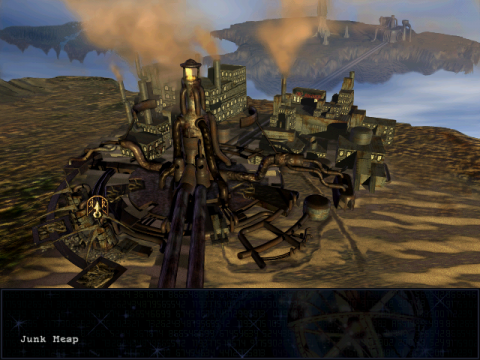
The game wears its influences on its shoulders, the opening segments bringing to mind Star Wars and Final Fantasy VII in equal parts. Its organic technology reminds one of 90s era Gainax mech designs, especially with Chosen battle suits. However, despite the influences, all of its talk of prophecy and the usual trappings of rebels and resistance movements fighting back against a fascist power, Septerra Core has a refreshing end-game, taking that undercurrent of friendship and teamwork in popular JRPGs and turning into a wider theme of cultural co-existence and understanding. Every “shell,” or layer, of the world has a radically different culture and way of life, the seventh even being populated by mutated people who look like H.R. Giger aliens that communicate through bioluminescent lights on their heads. From Tatooine-style desert scavengers to traditional fantasy heroes and even a few android pirates, there’s never a moment of the game that isn’t showing off something new. The game even manages to convey its themes not just through the plot, but through how your party interacts at points.
A novel little addition here is that some of your party members actually fight among themselves, and there’s narrative grounding for it. Unlike in other RPGs, where the player overrules everyone’s egos, there are two pairs of party members who will actively attack each other in battle because of their pasts with each other. Corgan, a member of an order of knights from shell three, hates Selina, who played a role in that invasion. There’s also Led, who’s home country was attacked by Lobo’s, who was once apart of the armed forces before getting free will from his “father.” By the time he’s join, something major had happened in the story that basically scarred Led, so she refuses to see eye to eye with him. The differences of these characters can only be solved through side quests that have them confronting these given pasts, and it adds some meat to the game’s bigger ideas. Granted, not much, as the game is missing a few narrative bits.
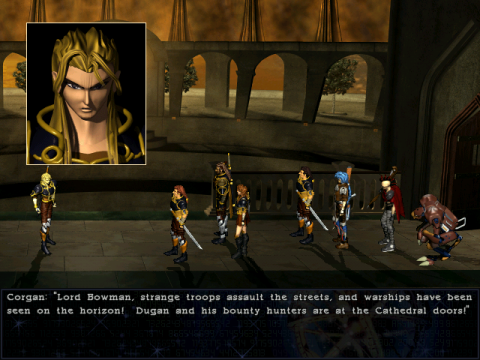
A few subplots don’t really get the development they deserve, particularly an early game enemy named Duke just disappearing after a third fight with them, and most of your party loses their voice or impact shortly after joining you. That’s not uncommon for most RPGs, granted, but it sticks out here because every gets some strong motivation and back story, even a seemingly evil mook with metal arms revealing himself as a complicated war vet with his own moral code. It’s mainly up to Maya to carry the game, which she thankfully does with her good-natured and strong willed personality. She could have easily been forgettable, but her strong back story as a war orphan established early in the game makes her a great foil to the various villains you come across, and it speaks a lot to her makeshift role as a leader by just showing her lead by example. This is nice, but that’s not enough to carry a thirty to forty hour RPG story properly.
Things really start to dry up once you get the airship. The mythology of Septerra isn’t especially interesting, just a basic savior myth with some Christian underpinnings, so it doesn’t really carry the main Doskias plot much. Where the game shines is exploring the shells, and that’s about wrapped up halfway through the game. There really isn’t much past that point besides “how do we solve the problem,” which does not make for a gripping narrative. There’s no real twist point like you’d get in a Final Fantasy or Tales game until the ending reveal of what “heaven” is, and it’s not that interesting a twist (though it is thematically on point). Character focused quests are minor, giving the party little time to shine, and actual side content is basically non-existent. Grinding doesn’t help either, especially with the game’s battle system. That’s not to say the battle system is bad, on the contrary, it just makes grinding all the more grating.
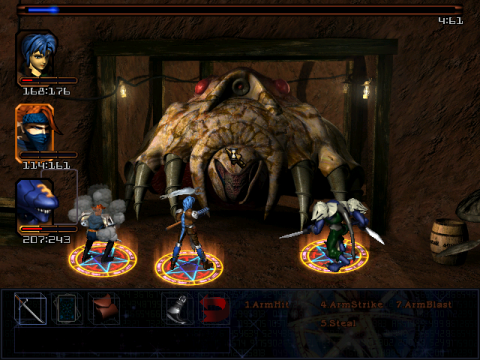
The idea is that you’re playing with a Final Fantasy style active time battle system, but everyone’s bar is split into three segments. There’s no auto stop once a bar fills, you just have to click on a character portrait to enter their given menu. The moves at your disposal change depending on how much bar you have, then goes back to zero upon making your move. This set-up allows for punishing ambushes, made more interesting by the core power system. Magic and certain special moves are used with the current party’s collective “core energy,” so the total changes as you change out your team and everyone uses the same bar when casting. This limits magic and power use early on, but makes later game casting a load of fun, especially with stronger spell cards you’ve managed to collect. This is a fun system in general, but it runs into a problem with the game’s pacing. Since there’s so many fights and they go on so long with a few overly long fighting animations (though never at PS1 era Final Fantasy summon levels), you start getting sick of fights after awhile. They offer great challenge early on, but there’s a point where that challenge becomes tedium.
This is disappointing, especially with everything surrounding the title. While the CG cutscenes haven’t aged too well (there’s some really bad textures at points, especially women’s make-up), the environments really stand out. The odd textures truly make Septerra feel like an alien place, giving a lot of life and color to the proceedings. It’s tacky, but in a good way, if that makes sense. There isn’t much music, but what’s there either pushes a nice mood or pumps the blood in a fight in quick order. We can thank Martin O’Donnell of Halo and Destiny fame for these. Otherwise, the ambient noise actually manages to be absorbing in its own strange way. The game has a real sense of character and mood, even down to the character designs and structures.
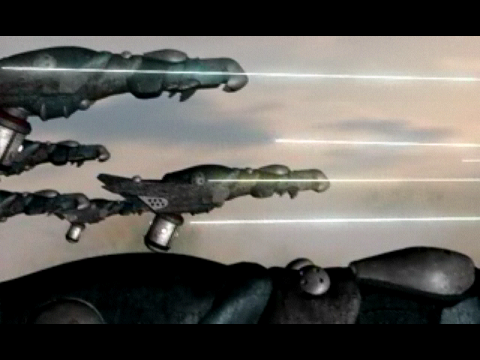
Man oh man did this team love anime. There are bits of Neon Genesis Evangelion, Trigun, and a good deal of fantasy OVA designs in here (particularly Record of Lodoss War), not to mention just general design choices like Led’s twin-tails. It can’t be mistaken for Final Fantasy because of all of the other influences, and it certainly stands out from just about every other western made RPG from the era. Oddly, the rocky late 90s CG actually benefits the game (for the most part) by making the characters seem different enough with their rough models to be memorable. Besides the shell seven mutants, none of the people you meet have particularly original designs, but the constant use of 3D portraits for dialog makes them appear like little else. Points also have to be given for the game being fully voiced, still a huge accomplishment at the time, especially for a game this size. The majority of the voice acting is even quite good, surprisingly.
However, that might also help explain why the game didn’t pan completely. The lacking amount of side content and meat in the story could be partly blamed on focusing development in all the wrong places, hurting the game’s, well, core. Septerra Core is a very interesting game for its aesthetics and ambitions, but it creates a strange situation where those interesting elements ended up distracting from fleshing out the experience. As it is, the game is very uninviting to newer audiences or casual players, and more hardcore RPG fanatics won’t get too much out of the experience. Septerra Core still deserves to be tried and experienced, but there’s not reason to really finish it, unless you really like monotony.
